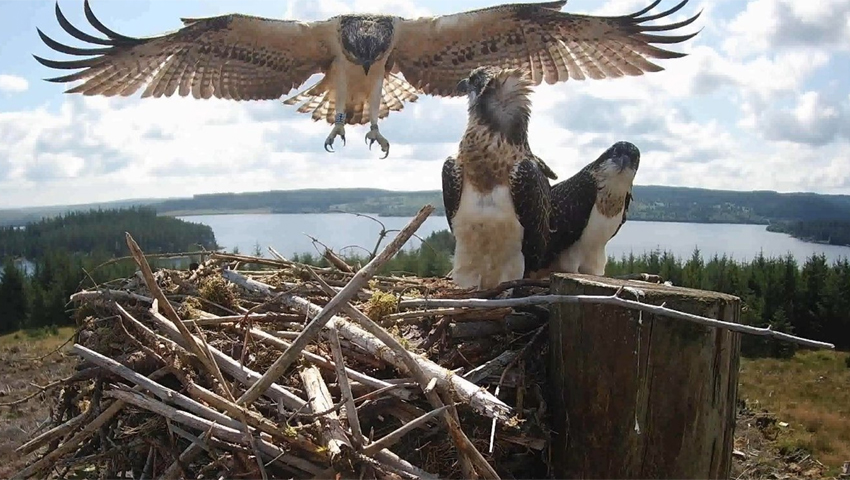FORESTRY England reports that the last of this year’s osprey chicks have successfully taken to the air in Kielder Water and Forest Park. In a milestone for the Kielder Osprey Project, 11 youngsters have now fledged after taking their inaugural flight.
The endangered bird first bred in the 63,000 hectare Northumbrian forest in 2009 after a gap of at least two centuries. Since then an astonishing 114 chicks have fledged over 15 consecutive years of breeding.
Joanna Dailey, osprey co-ordinator with Forestry England, explained “It’s a big boost to conservation efforts given that the species was extinct in England for almost all of the 20th century. Because we have high definition cameras on many of the nests we can follow the story as chicks pluck up courage to take their first flight. Tell-tale signs include wings being energetically flapped and hovering. It’s amazingly satisfying seeing them take to the air and do a circuit of their tree-top nest.”
Juvenile ospreys may have earned their wings, but the hard work continues for the parents. Chicks stay near the family nest and still need feeding. Perfecting their flying skills is the next stage in growing up and then they must learn to hunt. Plenty of body fat will be needed as within weeks they will begin a 3,000 mile journey to sub-Saharan Africa.
Duncan Hutt, Director of Conservation at Northumberland Wildlife Trust, added “It’s no accident ospreys have returned to Northumberland in such strength. It’s the result of long-term planning, team-work and sensitive habitat management. It’s a magnificent bird which is back where it belongs.”
Gary Storey from Northumbrian Water said “With so many ospreys on the wing, August is the best time to observe them fishing over Kielder Water. Tower Knowe visitor centre is a great vantage point and our partners Wild Intrigue are leading unique Osprey watch cruises on Northumbrian Water’s aptly named Osprey Ferry twice weekly on the reservoir.”
Eight of the young ospreys have also been fitted with unique rings to help identify them in the future. Three more were born on a wild nest in the forest which wasn’t safe to climb so ringing was not possible.
In part due to the wet weather fledging this year has been up to two weeks later than normal.
The Kielder Osprey Project is a partnership between Forestry England, Northumbrian Water, Northumberland Wildlife Trust and Wild Intrigue.
